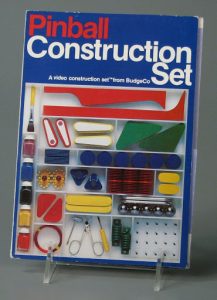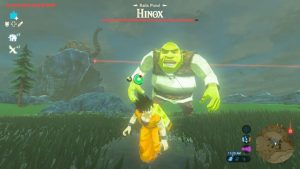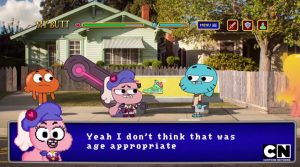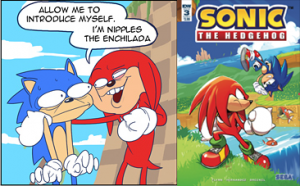The Endless Mission and the History of UGC, Part 1>>May 9, 2019
Greetings, everyone! In the weeks leading up to the release of The Endless Mission, we’re going to spend some time on this blog talking about the history of User Generated Content, or UGC for short. UGC is the lifeblood of The Endless Mission, so it probably goes without saying that understanding the history of what came before was quite important to us. Before we dive in, however, there are a few questions that need answering first, which we’ll spend the rest of this post covering. Pay attention now – there’ll be a test later.*
*No there won’t.
What is UGC?
User Generated Content is any content that is generated by users.

… Okay, seriously, what is UGC?
Wait, you’re still here? Dang, so much for this blog writing thing being an easy gig…
In regards to video games, User Generated Content is what happens when a game provides the player the means to create their own content that they can then use in the game. Character creators, level editors, and mods are all examples of this kind of content creation. The means that the game provides to do this is generally referred to as a “Content Creation Platform” or something similar, but the stuff that players then create in it is what is given the name UGC. Nowadays, virtually every game that allows you to create UGC also provides you with a way of sharing your stuff with other players over the internet. After all, feedback is important if you want to make your creations even better!
Where did UGC start? What was the first game that had UGC?
We’ll be going into more detail about this later, but the first commercially released video game that allowed for UGC was Pinball Construction Set, created by Bill Budge all the way back in 1983.

This was quickly followed by the level editors featured in Excitebike in 1984 and Wrecking Crew in 1985, proving that UGC was possible not only on computers, but consoles as well. Things would only get bigger from here, but these games were the first.
What kind of UGC do games usually have?
There are lots of ways for a game to allow for the creation of UGC. Some common examples, in roughly increasing order of complexity, include:
- Customizing the appearance of your player character
- Importing images from your computer to use as icons, banners, sprays, etc. in-game
- Building objects in-game such as vehicles or houses that you can then show off to others
- Level Editors that allow you to create maps/stages/tracks for others to play and compete on
- Scripting engines that let you program basic behaviors, allowing for the creation of AIs or more complex game modes
- Full access to the code of the game itself, so that users can create mods for the game
For the record, our goal with The Endless Mission is to allow our users to do all of the above-listed things. We’re nothing if not ambitious!… And maybe a little crazy. That too.
What are Game Mods? Are those considered UGC?
While the definition of a “Game Mod” can vary depending on who you ask, in general, a mod is any sort of file or program that a user creates and then adds into the game itself, altering the content of the game drastically. Some mods will change the gameplay, while others will replace character models with something entirely different. The one thing that ties them together is that the mod is usually created outside of the game and then added in by the player later, which is what makes them different from most instances of UGC that are created via in-game editors and the like. That, and they have a tendency to get kind of… weird.

As mods are clearly content that is created by the player, they can easily be seen as UGC. However, unlike most UGC, how accepted they are by the company that made the game can vary. After all, creating mods requires tearing the game apart and messing around with the code, something that some companies aren’t fond of. Some games, like Half-Life and Skyrim, thrive on their Mod Communities supported by the developers themselves, while other companies will ignore mods or even actively try to shut them down. Finally, note that mods are usually reserved for games that have limited means of UGC in the first place – if a game is already a very flexible Content Creation Platform (such as, say, The Endless Mission), then mods of this sort are pretty much wholly unnecessary. After all, anything you’d normally need a mod to do, we already plan on letting you do in-game already!
What makes for good UGC? How can I create something that others will enjoy?
Questions like this are hard to answer, as they can be very subjective. What is enjoyable and considered “good” UGC can vary greatly from person to person. That said, there are still some general ideas and good practices you should try to employ when creating UGC, such as…
- Know the Rules – Any game where you can share content you created with others online will have rules about what is and isn’t okay to share. Follow them. Nothing ends a career in UGC creation faster than getting perma-banned for uploading inappropriate or offensive content. Don’t be that guy.

- See What Others Have Created – This doesn’t mean “blatantly rip-off others’ ideas,” obviously, but browsing through the UGC made by other players can help provide inspiration for your own stuff. Maybe there’s a popular kind of character people keep making that you’d love to do your own spin on. Maybe someone’s level uses a cool mechanic that you want to see more of. No one creates in a vacuum, and using the creations of others as a launching point for your own content is a completely valid approach, so long as you put the effort into making it uniquely yours.
- Share Early, Share Often – Feedback from others is critical in the creation process. Having many pairs of eyes looking over your stuff can go a long way towards making it accessible and enjoyable by all. For instance, one of the biggest pitfalls budding game designers fall into is creating levels that are notoriously difficult because it’s easy for them, which is only the case because they’re the ones making it. Having folks who aren’t familiar with your work experience it can give you the perspective you need to make it better.
- Iterate, Iterate, Iterate – Just because you’ve posted your UGC online for all to see doesn’t necessarily mean you have to be done with it. Based on the feedback you receive (see above), there is nothing wrong with going back in and making changes. Your creations are always a work-in-progress, and coming back to a project later once you’ve learned more can help breathe new life into it.
- Don’t Stop Creating – World-class animator Chuck Jones once said “Every artist has thousands of bad drawings in them and the only way to get rid of them is to draw them out.” Don’t get discouraged if the content you create doesn’t feel up to snuff compared to others – just keep at it. The more you create, the better you’ll get at creating. Everyone has to start somewhere, and as long as you keep trying and keep improving, the UGC you make can end up amazing. Who knows? With the practice you get creating UGC, it’s possible to turn your creativity into a professional career!

In Conclusion…
Content Creation Platforms and User Generated Content are incredible features that allow players to become designers. Many folks in the game industry got their start messing around in level editors growing up, a tradition we are excited to continue in The Endless Mission. Be sure to check back next week as we dive into the history of UGC, starting with games that put creation at the forefront of their design!
Image Sources:
GIPHY, The Strong National Museum of Play, @goku, The Amazing World of Gumball, Tyson Hesse/IDW
BACK TO DEV BLOG

